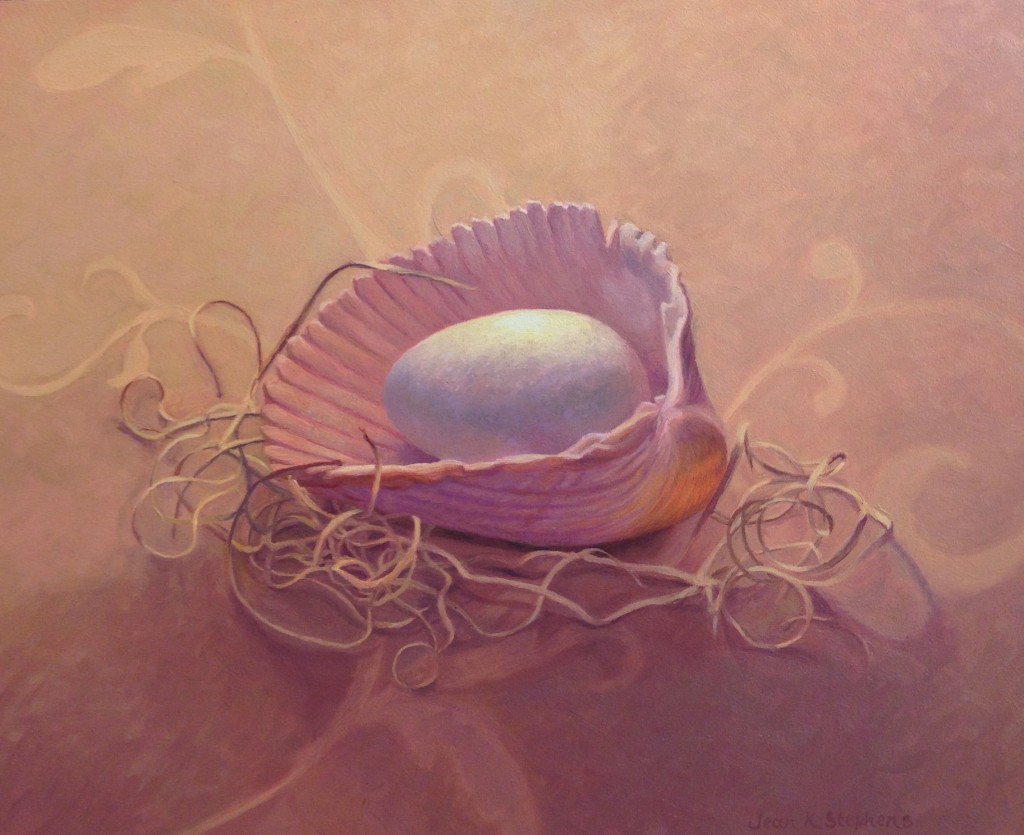Small is beautiful
There’s still time to check out the summer show at Oxford Gallery, which is full of great work, with a few pieces making an encore from previous shows, and a few offering a sneak preview of the exhibit of abstract work coming up next. The glimpses of what’s to come are intriguing and impressive, with work by half a dozen outstanding abstractionists. What’s on view, in advance, from that upcoming show is very strong, and James Hall thinks so highly of the exhibition that he’s publishing a catalog, with his own commentary on the show overall and each individual artist. He was just putting finishing touches on it when I showed up for a look. One thing I that struck me: the smaller work here was often what stayed with me the longest.
All the work in the current show is great, though I lingered longest over a few favorites. Tom Insalaco’s Adam and Eve on 57th St. returns from the Four Humours show and again dominates all the other work, somehow without diminishing anything around it by comparison. It just inhabits its own wall and world. Chris Baker’s 23rd St. makes a welcome return from a previous show, which appears to be a wonderful twilight glimpse of Manhattan’s Chelsea art district from the Hi-Line walkway. Alice Chen’s paintings, which often find their way into Oxford group shows, have always impressed me with their quiet mastery of Asian brush techniques. The small painting on view now looks, at first glance, like a purely abstract exploration of line and value, but as you study it you begin to discern what could be a pagoda jutting out from the side of a steep mountain slope. The scene takes shape. It’s a haunting, beautiful painting that hovers between pure abstraction and the evocative depiction of Chinese scroll painting.
Kate Timm’s still life, one of her best, is just as fine as the one still hanging at the 64th Finger Lakes. Her inclusion of jelly beans in a glass container caught my eye. Her work borrows a whole set of principles from Janet Fish and yet I’m always more impressed with the way Timm achieves a sense of accuracy without fussing below a certain level of detail. She generalizes areas of color, just as Fish has always done, and yet her work evinces a greater level of care and craftsmanship than the most recent work I’ve seen from Fish at her last show in New York, who seems to be dashing off canvases more rapidly than in the past. (It may be her intentional way of leaning toward more primitive technique, but for me it makes Fish’s images less compelling.) Timm seems to set the bar higher. Her scenes look more realistic without ever giving up her objective of creating a field of complex, interrelated color. The challenge I’m facing in my own work right now, and have kept returning to ever since I started painting, is how to convey a convincing representational image and yet make an arrangement of colors the primary motivation for creating the work. Timm always succeeds. Her color-saturated images (they seem to forbid the use of gray, black or brown) almost accidentally pop into a recognizable scene. She’s always working on two levels: to create a representational illusion without giving up her primary concern with creating a flat pattern of pure color that works just as well as abstraction. End result: brilliantly lit scenes that emerge from an all-over technique that makes every square centimeter of color just as integral to the image, in purely formal terms, as all the rest.
I kept coming back to a pair of small paintings by Jean Stephens: Questions of Faith, and Nestled, both of which depict eggs. I spent more time with Questions of Faith, simply because of my admiration for the way she rendered alphabet blocks in a certain light, before I recognized the gentle wit in the way she’d arranged her objects. A G block and a D block serve as bookends for a small O-shaped egg, spelling out God, for the observant viewer. The modesty of the image, given the gravity of the title and theme, was immensely refreshing. The eggs relate to the Hen and Quail blocks, and something is going on with the F and the K off to the side, about which one can only guess. Yet what impressed me the most was her handing of paint and the amazing fidelity to the texture and color of the blocks, on such a small scale. Her other egg painting, Nestled, is a remarkable evocation of morning light, where a white egg rests inside a scallop shell, surrounded by dried tendrils. All three sit on a patterned tile, which echoes the curling pattern of the hard/soft nest for the egg. Again, it’s a clever use of objects to create something recognizable by other means: a word, a nest, and in both cases a meditation on the nature of creation itself. This work seems like a charming and compelling departure for Stephens. It would be fascinating to see how far she can take this.
There’s so much more to see, but you need to get there by Sept. 7.

Comments are currently closed.